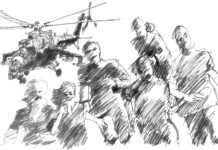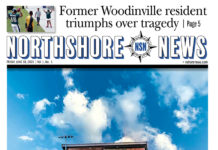Tether’s Hainsworth praised Plan A in a statement, noting the advantage of collaborating “with like-minded world-changers as each agency enhances each other’s strengths.”
Carney described the group as a “collection of superstar talent” in a statement. “It has been an ambition of mine to work with all of them,” she added.
“Modern brands want more experienced senior talent and ideas not overhead,” Essex said in a statement. “The talented stars that run these firms are the embodiment of that ethos and we’re delighted to add their unique talents to our rapidly growing federation.”
Essex told Ad Age that the Plan A portfolio is still lacking “a few capabilities” that it intends to add through further acquisitions, but noted that the goal is not to build another massive holding company. He declined to say what capabilities the group feels it is still missing.
Companies that join are given equity in Plan A, versus cash. The other agencies in the network are Helo, United Worldwide, Van’s General Store, Twin Studio and Beekman Social. The Plan A model has been described to Ad Age as a loose federation of shops that maintain autonomy, while allowing them—rather than forcing them—to work together.
Boutique shop Badger & Winters was also formerly part of Plan A but it announced in September 2019 that it was parting ways with the holding company less than a year after joining. “We didn’t feel like the Plan A model was getting the momentum yet that we were hoping for in terms of bringing new business our way and bringing in other agency partners that would give the whole entity scale and value,” Badger & Winters President Jim Winters told Ad Age at the time.
Commenting on the split at the time, Essex said Plan A and Badger & Winters came to a “mutual conclusion that it just wasn’t a fit” and hinted at there being “news on additional partners soon.”
As for those additional partners, Chapter’s Kay and Robinson said in a joint statement that coming together with “the rebel alliance that is Plan A” is the “natural next step” for the agency they founded in 2015. “We’ve always been big believers that the best modern companies need to be networked, open and radically collaborative by nature,” the Chapter founders said in the statement.
——————————————
The Marketing Fact Pack accompanying the Dec. 23 issue of Ad Age contained the forecast of spending, by medium, for 2020, which will be bolstered by political advertising in this presidential-election year. The numbers were provided by Publicis Groupe’s Zenith agency.
To no one’s surprise, Internet spending is expected to continue to dominate the big five traditional media (TV, Radio, Newspapers, Magazines and Outdoor [now linked with Cinema]), although the 2020 vs. 2019 spend is forecast to be down 3% from the 2019 vs. 2018 spend.
The total 2020 spend is projected to be $509 billion—a 4.8% increase over 2019. Here are the numbers, in billions of dollars:
Media 2020 2019 2018
Internet $135.1 $120.2 $104.1
TV 66.0 67.2 68.2
Radio 17.6 17.6 17.6
Newspaper 13.0 13.9 15.1
Magazine 11.5 12.8 14.1
Outdoor/Cinema 11.1 10.9 10.5
Total Media 254.2 242.5 229.6
Marketing Services
Sales Promotion 86.7 85.2 82.7
Telemarketing 61.4 60.8 59.6
Direct Mail 47.4 46.3 47.7
Event Sponsorship 45.3 42.7 39.9
Directories 7.8 7.9 8.0
Public Relations 6.3 6.0 5.7
Total Marketing Svcs. 254.9 248.9 243.6
Total Media/Mkt.Svcs. $509.1 $491.4 $473.3
The Top Ten leading national advertisers, ranked by 2018 spending, in millions of dollars, were:
- Comcast $6,122
- AT&T 5,362
- Amazon 4,470
- Procter & Gamble 4,305
- General Motors 3,139
- Walt Disney Co. 3,132
- Charter Comm. 3,042,
- Alphabet (Google) 2,960
- American Express 2,798
- Verizon Comm. 2,682
The Top Ten most advertised brands in the U.S. in 2018, ranked by measured-media spending, were Geico, Amazon, Progressive, Verizon, Chevrolet, Apple, Ford, T-Mobile, McDonald’s and AT&T.
——————————————————————
A Dec. 23 article in Ad Age, titled “Agencies Overboard,” chronicled the array of challenges that have heightened the angst—or even caused the demise—of Seattle-area creative agencies. About the only good news is the confirmation that we’re not alone!
Rob Schwartz, the CEO of TBWA/Chiat/Day New York, cited the “perfect storm” of shrinking budgets, difficult clients, controversial contract terms, in-housing and a movement from agency of record (AOR) to project work that he says is “buffeting the agency business…and threatening to swamp the boat.”
“This is exactly what I feel on a daily basis,” Schwartz said. “Shops aren’t necessarily sinking, but navigation has become more difficult. The article goes on to point out that some, of course, have gone under, and it lists seven that have closed their doors this decade.
No. 2 on the list, just behind Young & Rubicam, and just ahead of J. Walter Thompson, is Seattle-based Creature, which had a great 14-year run, before closing “ignominiously” in 2014. And it left with creditors the likes of Time, AOL, Clear Channel and NBC. Holding- company parent WPP merged the 150-year-old JWT into sibling shop Wunderman, which also resulted in the swallowing up of Seattle’s venerable Cole & Weber into the newly minted Wunderman Thompson agency that boasts on its website of having “a truly global reach with over 20,000 people in 90 markets.”
The article also contains a lengthy discussion on business pitches and the increasing client proclivity to claim ownership of spec work and reluctance to discuss the budget for the proposed work.
And according to new-business data from consultancy R3, there were 10% fewer pitches in 2019 for 26% less revenue. “This trend is only going to continue,” warned R3 co-founder and principal Greg Paull. “There’s been more pressure than ever on getting more for less.”
—Larry Coffman





